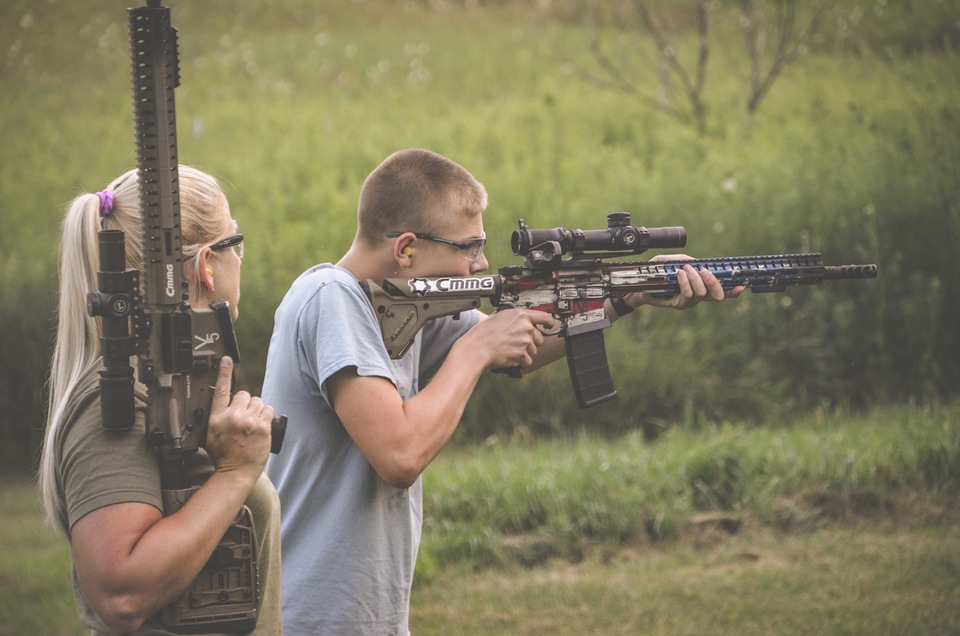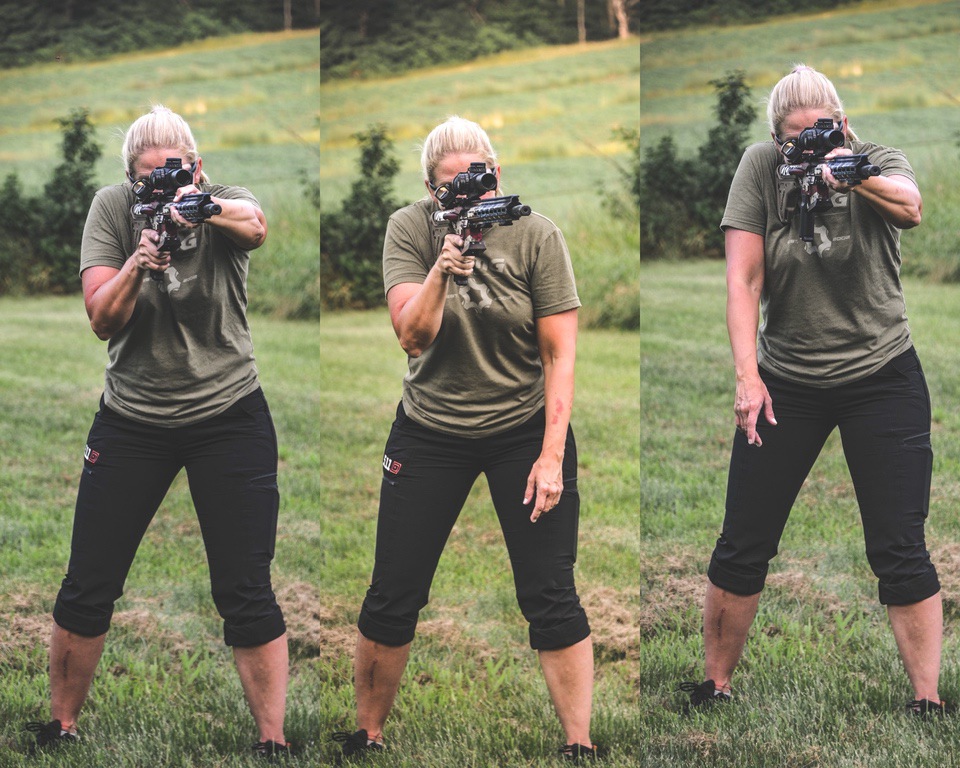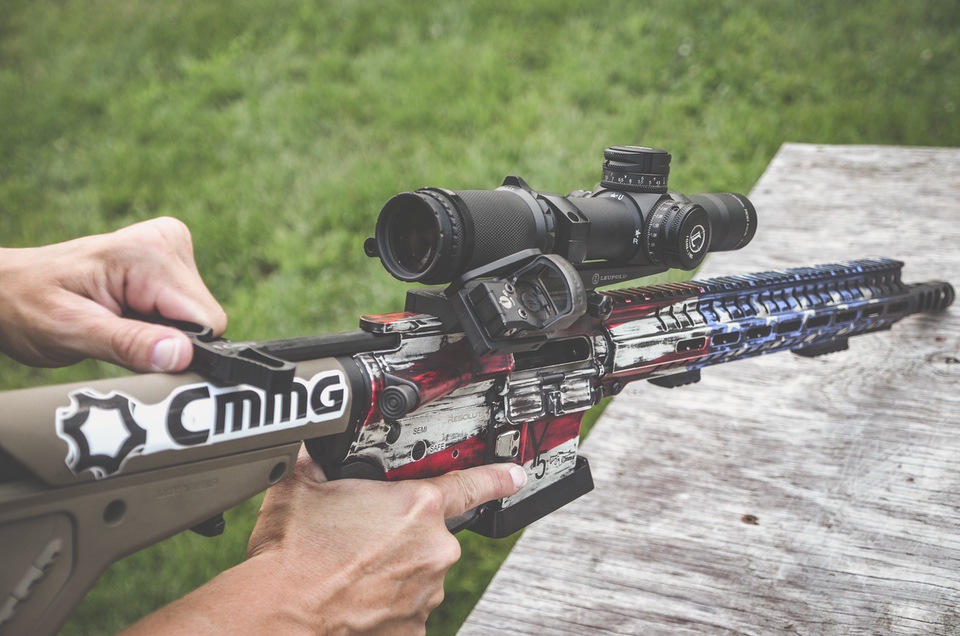Last month we touched on the role parents have in forming not just their children’s minds, but also their children’s capacities for critical thinking and preparedness. We talked about safe firearms handling habits as they pertain to a pistol, and this month, we are going focus on these practices as pertaining rifles.
Sponsored by Jagemann Sporting Group
Starting the entire process of learning to shoot with a small caliber rifle is the easiest way to teach someone to shoot. A .22 rifle, fired from a bag off a table, is a perfect introduction to shooting. It’s quiet, soft recoiling and can be very fun with the right targets. And safe habits for handling firearms are easy to teach with a long gun. Things like turning the wrong way is less likely while shooting a rifle from a bench.

Just like learning to handle a pistol safely, learning to handle a rifle safely can be done by using the 4 rules of firearms safety. You might want to print out this section and take it to the range with you. Go over it with your own kids and friends.
1 – Treat every gun as if it’s loaded. That means we first check if the gun is empty when we pick it up. To do this with a rifle, we make sure there is no magazine inserted, then we hold the pistol grip in our strong hand ( if it is an AR-style rifle) and use our weak hand to pull the charging handle back so that we can see into the chamber. We should leave the bolt locked back so it is very clear that the chamber is empty. We can also use a chamber flag. If we are using a bolt-action rifle, we need to unlock the bolt and bring it back to see that the chamber is empty. Again, place the gun on the shooting bench or table with its action open so everyone can see that it’s not loaded.
It is YOUR PERSONAL RESPONSIBILITY to check if a gun is loaded every time you pick one up.
2- Never point a rifle at anything you do not intend to destroy. This means that while we are removing guns from the safe, bagging them up, handing them to someone before or after we check if they are loaded … we never point a gun in an unsafe direction. When we move with a rifle, from the safe to a bag, or from our bag to the shooting bench, we always keep the muzzle from covering or pointing at anything we don’t want to destroy.
3 – Finger off the trigger until you are ready to shoot. For obvious reasons, we don’t put our fingers on any triggers until we are aimed at targets, and ready for guns to be fired. With a rifle, this might mean that we don’t put our finger on the trigger until we are set up behind the shooting bench, and aimed at the target. When we are hunting, this means we never put our fingers on any triggers until we are aimed at our targets and ready to shoot.
4 – Know your target and beyond. This means considering what might be behind a target we intend to destroy. Rifles will shoot farther than pistols, and we need to truly consider what is beyond our target. Ask yourself these questions: How far will that round travel if we miss, and where will it go? Are there other hunters behind the deer we want to shoot? Is there a berm behind our zero target on the range?
One of the common ways people forget about “beyond” their target is when they are zeroing a gun, and bring a target closer. Most ranges have a berm or backstop, and your impacts are designed to hit the berm and stop. When you move a target closer to the shooter, or you shoot from prone a target mid-way between a shooter and the berm, you potentially can skip rounds off the berm or cause them to impact outside the berm. So, considering what angle you shoot a rifle at and where your rounds will impact is important.
You also need to be aware that some bullets will skip over the berm anyway, so you need to know what’s behind the berm, too. In other words, don’t park your car back there. Don’t walk back there during live fire.

Holding a rifle requires 2 hands, so it’s easier than a pistol for people who are smaller statured. Your stance should place the gun close to the center line of your body, well grounded in your shoulder. Your face should be firmly on the stock, and you need to establish a solid cheek weld. Your weight will be forward, over the balls of your feet and that will help you to manage the recoil. Pulling the gun back into your shoulder with both hands is another important step. Your support hand should be parallel to the barrel of the rifle, without locking your elbow. Your head should be level from side to side, to help maintain proper balance, and not tipped too far forward. Indexing – or establishing a position where your body is naturally facing the target – also builds awareness of your natural point of aim.

Rifles play a big role in American culture, especially related to hunting. Knowing how to safely handle them, unload, reload and move with them safely is an important part of not just gun ownership, but of living in a world where we might encounter a tool like a firearm.
Becky Yackley primarily competes in 3 Gun, USPSA, Bianchi pistol, but has competed in shooting since 1989 in disciplines from service-rifle, to NCAA Air Rifle and Smallbore, air pistol and a little bit of long range rifle. She shoots guns and cameras at competitions around the country, and writes in her fictional spare time. View all posts by Becky Yackley